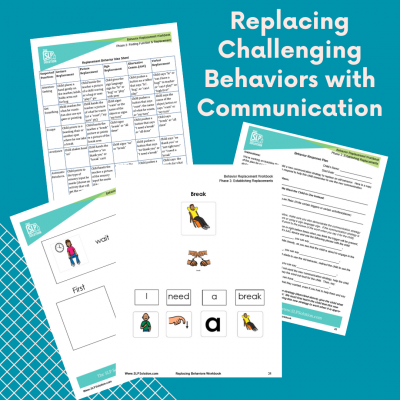
Replacing Challenging Behaviors with Language Kit
Replacing Challenging Behaviors with Communication for Non-Verbal and Emerging-Verbal Children
(No Prep Kit)
(No Prep Kit)
Children who are not able to communicate effectively with those around them often resort to what we call “challenging behaviors” in order to express themselves and get their wants and needs met. Some of those children are very good at making those challenging behaviors work for them but they can interfere with our ability to help them communicate with those around them and participate in daily living activities or school.
We can help these children replace those challenging behaviors with effective communication strategies that will help them communicate their wants and needs without becoming disruptive or destructive. Our job as the speech-language professional is to take a look at those behaviors and figure out what they are communicating. Then, we can teach the child effective communication strategies that will help reduce the need for the child to engage in those other behaviors. And we can do this even if the child is non-verbal or doesn’t have many language skills yet.
This packet includes everything you need to do just that!
What’s Included:
- Sample Goals
- Data Collection Sheets
- Questionnaires and Letters for Parents and Teachers
- Lesson Plans and Instructions for Every Step of the Process
- Fill-in-the-Blank Behavior Plans and Questionnaires for Team Meetings
- Visual Aids for Teaching Communication Strategies
- Ideas for How to Replace those Challenging Behaviors
This 56-page packet includes everything you need to walk you through identifying the function of challenging behaviors and replacing them with effective communication strategies. Everything is laid out for you and we’ll walk you through the entire process, step-by-step. You’ll find resources for parents and educators for every step of the process so you can keep the whole team on the same page to keep the child moving forward.
Age Range: This packet is perfect for children who are non-verbal or who are just beginning to communicate (up through the simple sentences level). We find that this often corresponds with ages 1-5 years but older children may benefit from this packet as well if they are in those non-verbal, pre-verbal, or emerging-verbal stages of development.
Follow this kit from front to back and you’ll have everything you need to do the following:
- Gather Information about the child’s behaviors in the natural environment
- Conduct an Effective Observation of the child’s behaviors while altering the environment to test theories
- Identify the Function of the behaviors
- Choose Appropriate Replacement Behaviors that use effective communication strategies to get wants and needs met
- Meet with the child’s team to Create a Behavior Response Plan and Identify Environmental Modifications
- Introduce the New Communication Strategy to the child in a 1:1 session (in the natural environment)
- Help the child’s team carry out the plan to Help the Child Establish the New Strategy
- Help the child Generalize the New Communication Strategy
- Help the child Learn to Wait to get what he has communicated when in the middle of another activity
- Choose New Behaviors to target or identify other areas of need
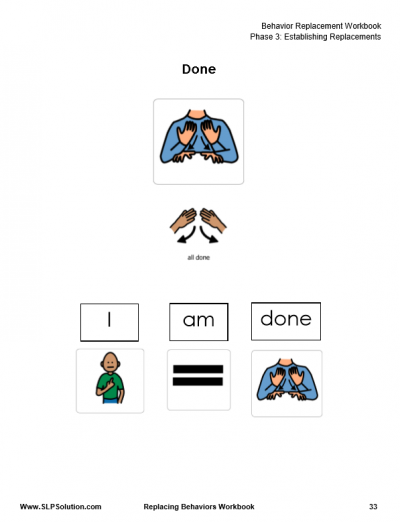
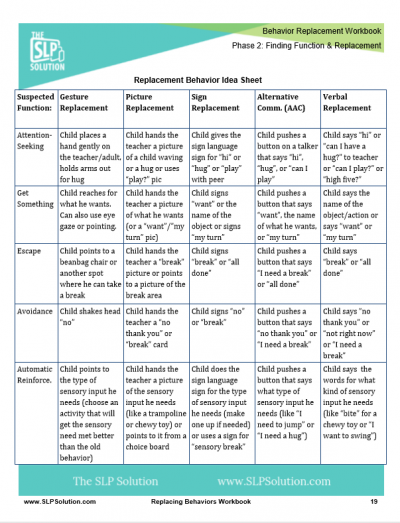
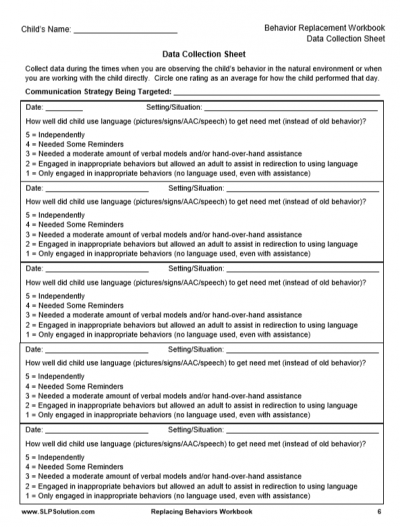
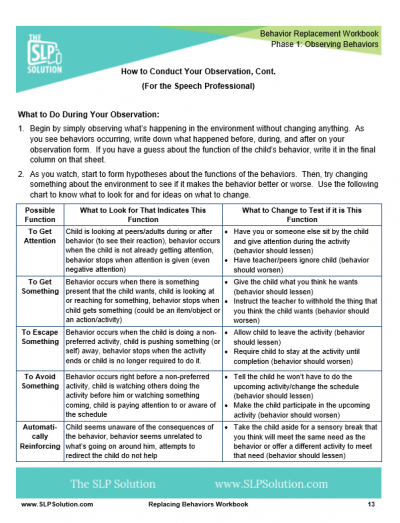
Sample Goals and Data Collection Pages
Sample goals for using rubric-style assessment for the following skills:
- Using Language to Request a Break instead of Using Escape/Avoidance Behaviors
- Using Language to Request Something
- Using Language to Seek Attention
- Using Language to Request a Sensory Break or Activity
Use the rubric-style data collection sheet to record progress on how independently the child is able to use language to communicate a specific want/need.
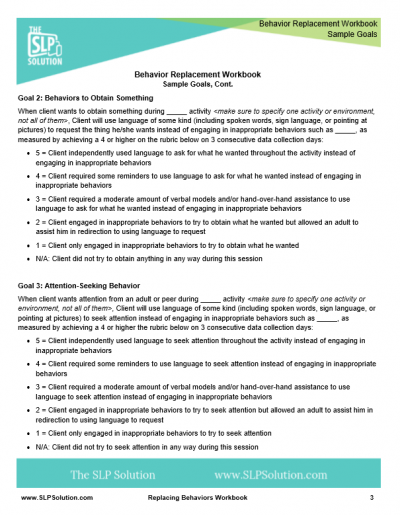

Letters and Questionnaires for Caregivers and Educators
Keep parents, caregivers, educators, and staff on the same page throughout the whole process. Each phase of therapy includes letters and/or questionnaires that can be sent to parents and educators to get feedback and inform them of their role in the process.
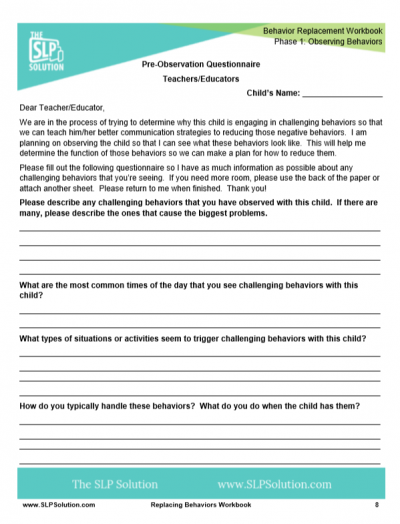
Lesson Plans and Instructions for Every Phase of the Process
For each phase of therapy, we’ll tell you exactly what to do during your sessions and how to make decisions about the best replacement behaviors to choose and strategies to try. You’ll have exactly what you need for each of these phases:
- Observing Behaviors
- Determining the Function of Behaviors and Choosing Replacement Beahviors
- Establishing the Replacement Behavior
- Generalizing the Replacement Behavior
- Reviewing Behavior and Resetting

Fill-In-The-Blank Behavior Plans and Questionnaires for Team Meetings
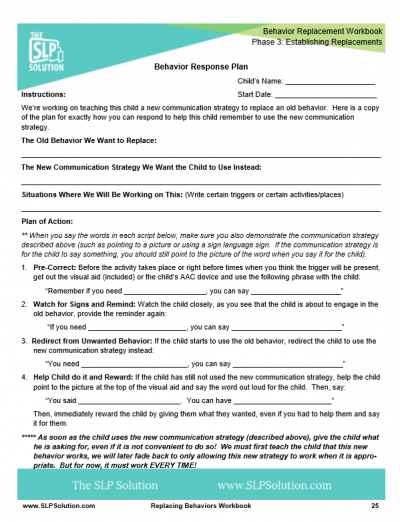
Visual Aids for Teaching Communication Strategies

Ideas for How to Replace those Challenging Behaviors



